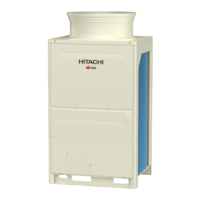
Do you have a question about the Hitachi air365 Max Series and is the answer not in the manual?
| Brand | Hitachi |
|---|---|
| Model | air365 Max Series |
| Category | Air Conditioner |
| Language | English |
Lists the available outdoor unit models and their corresponding HP capacities and model codes.
Explains the meaning and structure of the unit model name.
Details the optimal operating temperature ranges for cooling operation.
General notices regarding Hitachi-Johnson Controls Air Conditioning's policies and product improvements.
Instructions for inspecting the product for damages and verifying its components upon receipt.
General safety guidelines for installation, operation, and maintenance to prevent injury or death.
Precautions to prevent property damage, such as wiring and installation considerations.
Warnings and guidelines for safely installing the outdoor unit to prevent hazards.
Critical safety information and warnings related to handling refrigerants like R410A.
Safety guidelines and warnings for electrical wiring, connections, and power supply.
Overview of the SET FREE "air365 Max" series, highlighting its features and benefits.
Information about the R410A refrigerant, its properties, and installation requirements.
Lists essential tools and instruments required for R410A refrigerant installation work.
Details the range of outdoor units available and their specifications.
Specifies compatible indoor unit types and their nominal capacities for outdoor units.
Information on optional kits for connecting multiple outdoor units in a system.
Details optional multi-kits for branching refrigerant pipes to multiple indoor units.
Lists and describes the accessories supplied with the outdoor unit.
Guidelines for selecting an appropriate installation site for the outdoor unit.
Specifies the required clearances around the unit for operation and maintenance.
Guidelines for safely moving, handling, and transporting the outdoor unit.
Detailed procedures for lifting and moving the outdoor unit using slings.
General steps and considerations for installing the outdoor unit.
Requirements and methods for creating a stable and level foundation for the unit.
Instructions on how to manage and treat drain water from the outdoor unit.
Specifies acceptable materials, standards, and quality requirements for refrigerant pipes.
Procedures, precautions, and requirements for performing brazing on refrigerant pipes.
Instructions and specifications for flaring refrigerant pipes and making secure joints.
Restrictions and precautions for installing multiple outdoor units and their piping.
General instructions and considerations for connecting refrigerant piping.
Detailed steps for connecting refrigerant pipes between indoor and outdoor units.
Guidelines and restrictions for piping work when combining multiple outdoor units.
Guidance on selecting pipe sizes, connection methods, and multi-kits for system configurations.
Specific methods for connecting outdoor units to piping connection kits.
Connecting outdoor units, multi-kits, and indoor units in various system configurations.
Pipe size specifications for outdoor units in a 3-unit combination system.
Pipe size specifications for outdoor units in a 4-unit combination system.
Rules and limitations for branching refrigerant pipes and connecting multiple units.
Guidelines for managing height differences between indoor and outdoor units in system configurations.
Pre-wiring checks for electrical components, power supply, and compliance with codes.
Detailed instructions and diagrams for wiring the outdoor unit's power and communication circuits.
Steps for connecting power supply, communication wires, and ensuring proper grounding.
Instructions for setting DIP switches and push switches for outdoor unit configuration.
Procedures for setting various unit functions, inputs, and outputs via switches.
Configuration of switches for outdoor unit operation, including refrigerant cycle and unit numbering.
Detailed steps for configuring external inputs, outputs, and specific function settings.
Procedure for performing the air-tight test on the refrigerant system using nitrogen gas.
Method for calculating additional refrigerant needed based on piping length and unit capacity.
Steps for charging the system with the calculated amount of additional refrigerant.
Precautions regarding refrigerant leakage, suffocation risk, and concentration limits.
Guidance on calculating refrigerant concentration limits in rooms for safety.
Checks and preparations required before conducting the test run.
Procedures for performing the test run, including operation checks and setting adjustments.
A form for recording the results of the test run and subsequent maintenance activities.
A comprehensive list of alarm codes, their categories, contents, and leading causes.
Describes the safety devices and mechanisms that protect the compressor during operation.
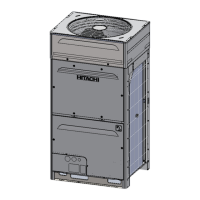
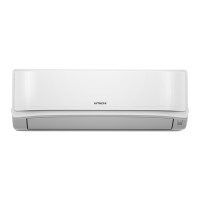
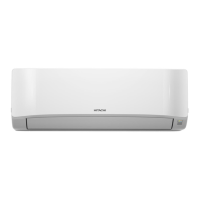
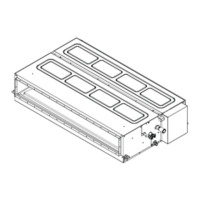
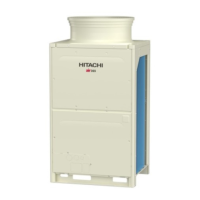
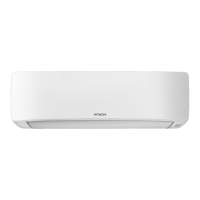

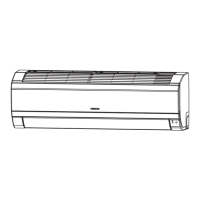




